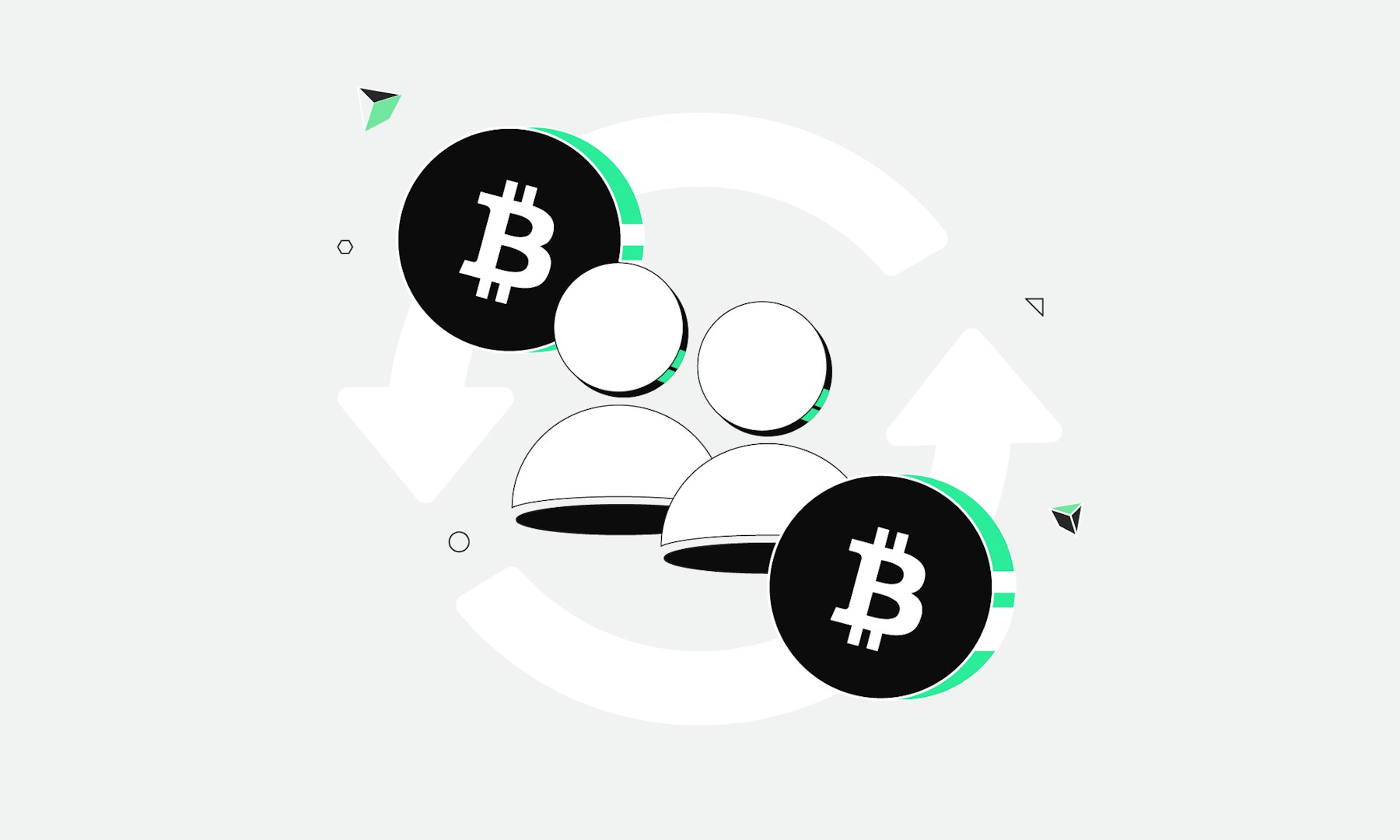Peer-to-Peer networks are used in many different contexts, from simple file-sharing services to complex applications like cryptocurrencies and blockchain technologies. The core idea behind P2P is to maximise resource utilisation and distribute the workload, which is often more efficient and cost-effective than traditional centralised systems.
How does a Peer-to-Peer (P2P) network work?
Simply put, in a Peer-to-Peer (P2P) network, all connected devices communicate directly with each other, without a central authority. Every participant – meaning all devices in the network – has equal rights and is linked to the others. To start a P2P network, a network software or protocol must be installed on each computer.
This software enables individual peers to discover each other and establish a connection. Communication occurs through direct connections between peers, where each peer helps identify active participants in the network and connects with them. Once a connection is established, data can be transferred directly between peers (e.g., from one laptop to another) without a central server. Special algorithms determine which data should be requested or sent by which peer.
The P2P software manages the exchange of data and resources, ensuring that requests and responses are efficiently distributed. This decentralisation makes the network more robust and harder to disrupt, as there is no single point of failure. Additionally, P2P networks can scale dynamically, as new peers join, increasing the network’s capacity and distributing the load more efficiently.
Peer-to-Peer systems can be classified into different types:
Structured and unstructured Peer-to-Peer systems
Structured P2P systems use an organised network layout, often managed by consistent hashing algorithms that allocate resources to specific locations. This enables efficient data retrieval since the location of each resource is known. A common example is Distributed Hash Tables (DHTs), which are widely used in structured P2P systems.
Unstructured P2P networks have no fixed scheme for resource allocation. Peers connect randomly, and search queries spread across the network until the requested resource is found. While this model is easier to implement and more flexible, it often results in longer response times for searches.
Centralised and decentralised Peer-to-Peer networks
Centralised P2P networks rely on a central server or index to manage information about peers and available resources. This makes searching and connecting more efficient but introduces a single point of failure, increasing the risk of disruptions or attacks.
Decentralised P2P networks distribute these functions across all peers, eliminating the reliance on a central server and improving network resilience. In a fully decentralised network, every peer shares responsibility for managing the network, enhancing fault tolerance and resistance to centralised threats.
Hybrid P2P networks
Hybrid P2P networks combine elements of centralised and decentralised models. They use central servers for key functions like peer discovery and connection management, while data storage and sharing remain decentralised. This approach balances the efficiency of centralisation with the robustness of decentralisation. Hybrid P2P systems are particularly popular in environments requiring fast access times and scalability, without fully sacrificing decentralisation.
Examples of Peer-to-Peer applications
P2P technology is used in a variety of applications, from file sharing and streaming services to advanced financial systems like cryptocurrencies. Some well-known P2P applications include:
BitTorrent
A well-known example of a Peer-to-Peer application is BitTorrent, a file-sharing service that provides an efficient method for distributing large amounts of data over the internet. Users download parts of a file while simultaneously sharing them with others, significantly reducing bandwidth usage and improving download speeds.
Skype
VoIP services like Skype also use Peer-to-Peer technology to establish direct communication connections between users. This allows phone calls and video chats to take place without traditional telecom infrastructure, reducing costs and improving global accessibility.
Bitcoin
The Bitcoin network operates as a decentralised financial system based on Peer-to-Peer technology. Transactions are conducted directly between users, without the need for a central bank or financial institution. Each transaction is recorded in a public database, the blockchain, which is collectively maintained by network participants.
